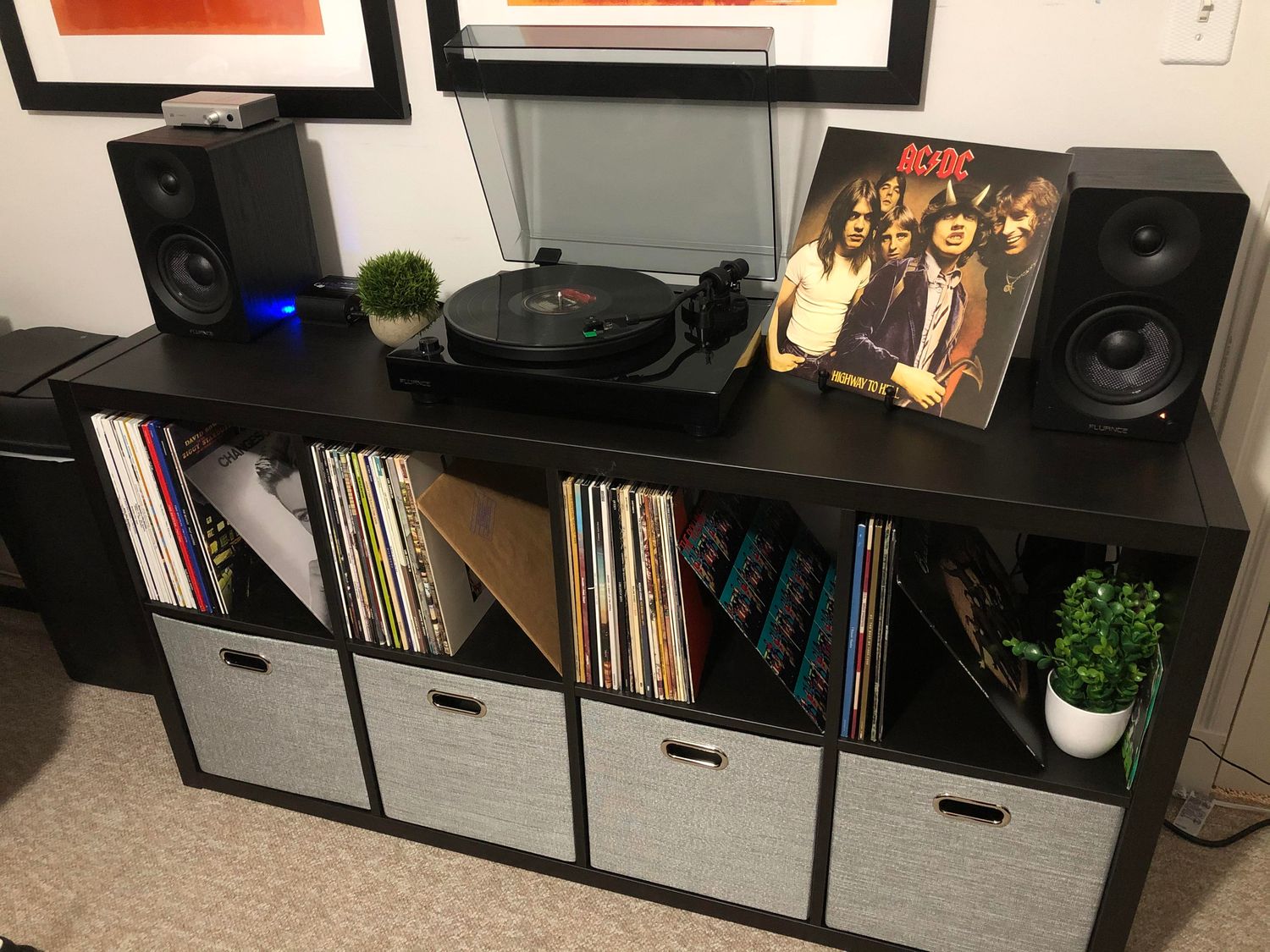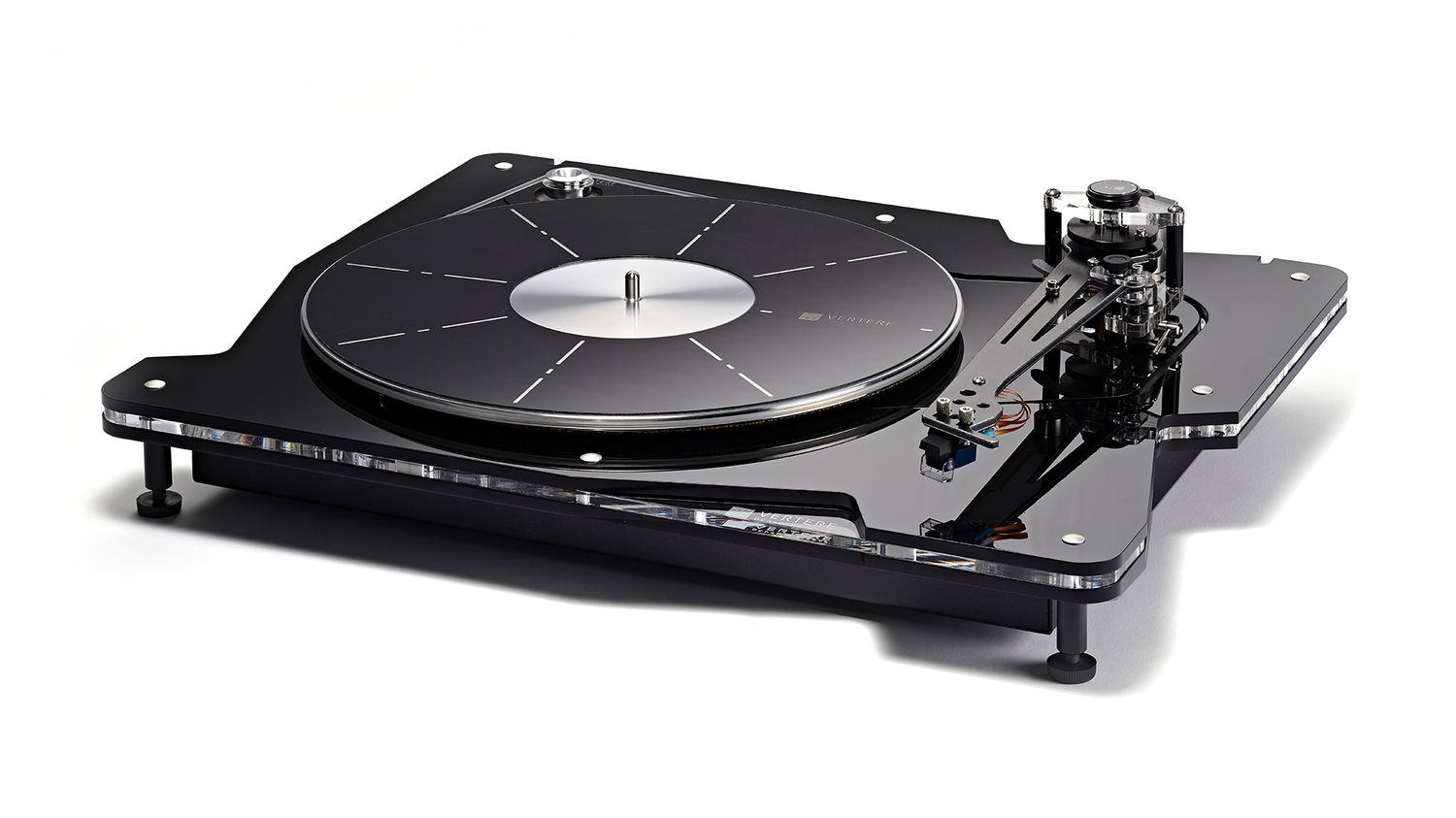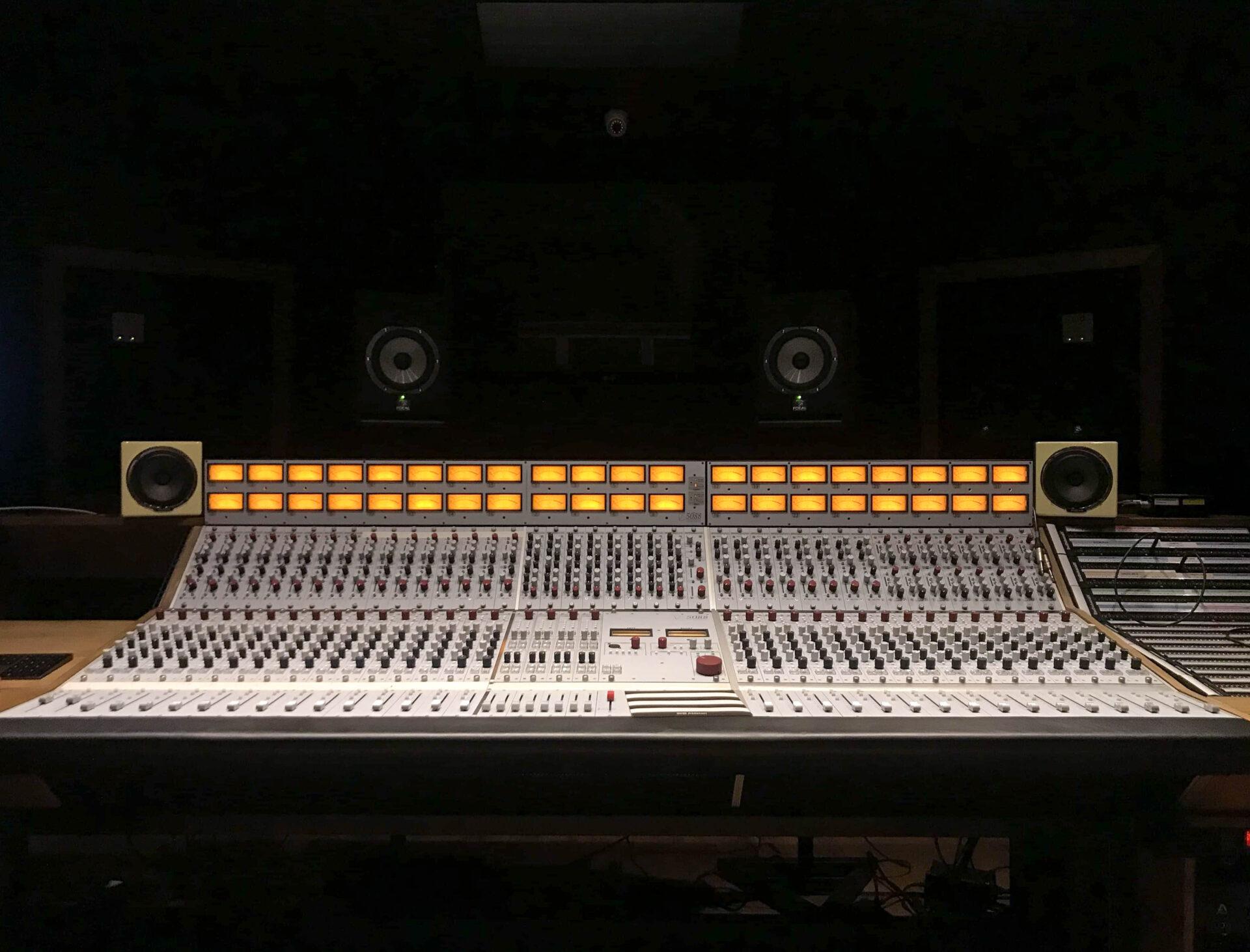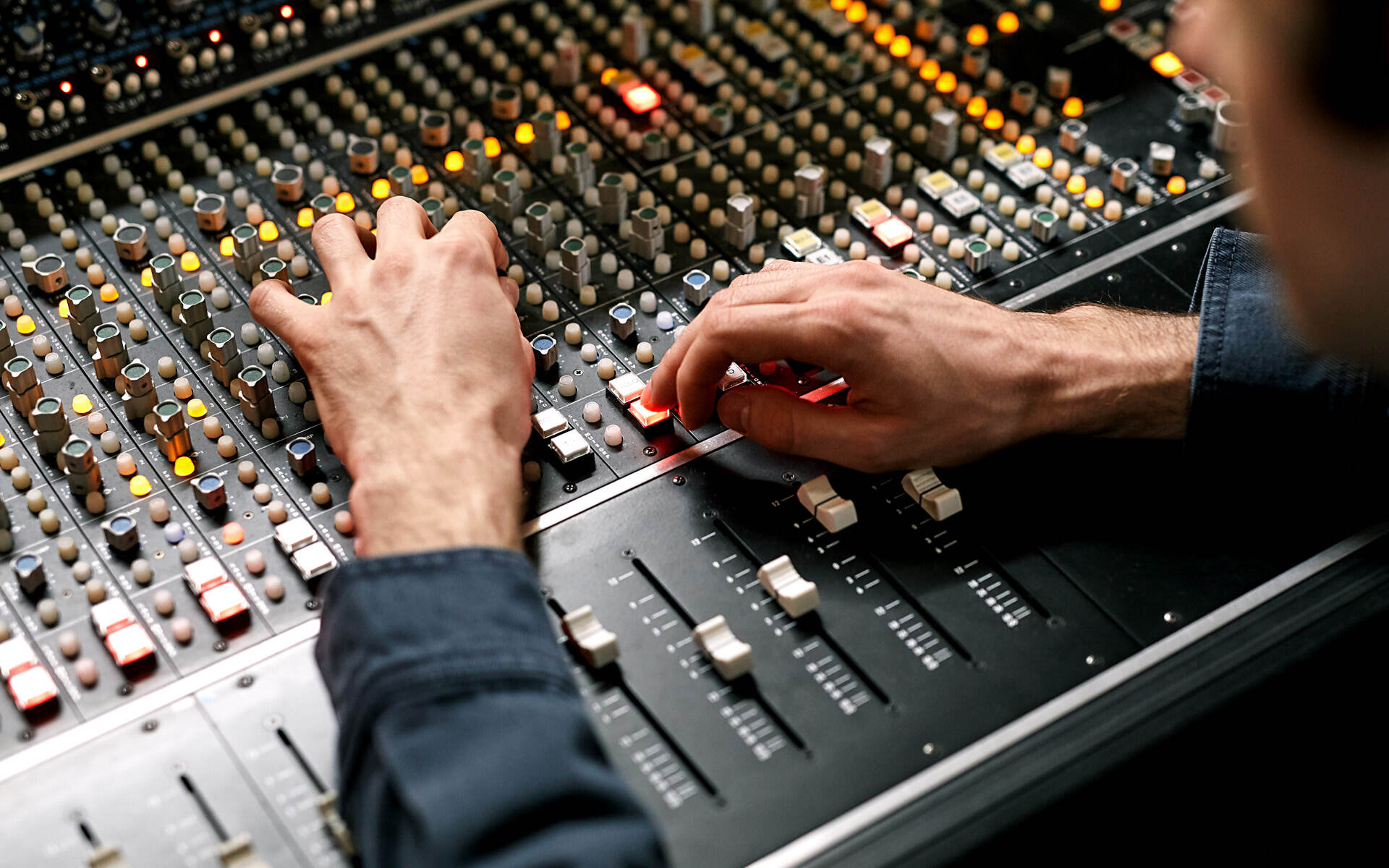Home>Devices & Equipment>Subwoofer>How Big Of A Subwoofer Do I Need


Subwoofer
How Big Of A Subwoofer Do I Need
Modified: February 18, 2024
Find out the perfect subwoofer size for your audio needs. Explore our guide on how to determine the right subwoofer size based on your preferences and space constraints.
(Many of the links in this article redirect to a specific reviewed product. Your purchase of these products through affiliate links helps to generate commission for AudioLover.com, at no extra cost. Learn more)
Table of Contents
Introduction
Subwoofers play a crucial role in any home theater or audio system, providing the deep bass frequencies that add depth and impact to music, movies, and other audio experiences. If you’re looking to enhance your audio setup with a subwoofer, you may be wondering how big of a subwoofer you need. Finding the right size subwoofer requires considering several factors, including room size, desired sound level, music preferences, and speaker system integration.
Understanding the basics of subwoofers is important in making an informed decision. Subwoofers are specialized loudspeakers designed to reproduce low-frequency sounds, typically ranging from about 20Hz to 200Hz. These deep bass frequencies are not adequately reproduced by regular speakers, making a dedicated subwoofer essential for achieving accurate and impactful bass response.
The size of a subwoofer is typically measured by the diameter of its driver, which is the cone-shaped component that produces sound. Common subwoofer driver sizes range from 8 inches to 15 inches or larger. The larger the driver, the more air it can move, resulting in deeper and more powerful bass. However, choosing the right size subwoofer is not solely about getting the biggest one available. It’s about finding the right balance between the room size, desired sound level, and overall system integration.
So, how do you determine how big of a subwoofer you need? In the following sections, we will explore the key factors to consider to help you make an informed decision. By taking into account these factors and understanding how they relate to your specific audio setup and preferences, you’ll be able to choose the perfect subwoofer size that delivers the desired bass performance and complements your existing speakers.
Understanding Subwoofers
Before diving into the factors that determine the size of the subwoofer you need, it’s important to have a solid understanding of what subwoofers are and how they work.
Subwoofers are specialized loudspeakers designed specifically to reproduce low-frequency sounds, also known as bass. They are responsible for producing the deep, rumbling tones that add depth, impact, and excitement to music, movies, and other audio content.
Unlike regular speakers that cover a wide range of frequencies, subwoofers focus solely on the lower end of the frequency spectrum, typically ranging from around 20Hz to 200Hz. These frequencies are often felt more than heard, as they create a physical presence and impact that can be particularly immersive.
Subwoofers achieve their low-frequency capabilities through larger drivers and specially designed enclosures. The driver, or speaker cone, is responsible for producing the sound vibrations, while the enclosure helps control and enhance the bass response.
Subwoofers come in different sizes, which refer to the diameter of the driver. Common subwoofer sizes include 8 inches, 10 inches, 12 inches, and 15 inches. The larger the driver, the more air it can move, resulting in deeper and more powerful bass.
When it comes to choosing the right subwoofer size, it’s important to strike a balance between the size of your room, the desired sound level, and the overall integration with your speaker system. A subwoofer that is too small may not provide sufficient bass response, while a subwoofer that is too large may overpower the room and create an unbalanced sound.
Understanding the fundamentals of subwoofers sets the stage for making an informed decision about the size of subwoofer that will best suit your needs. In the next sections, we will explore the different factors to consider in order to determine the optimal size of subwoofer for your specific audio setup.
Factors to Consider
When determining how big of a subwoofer you need, there are several important factors to take into consideration. Understanding these factors will help you choose the right size subwoofer that will provide optimum performance and integration with your existing audio system. Let’s explore these factors in more detail:
- Room Size and Layout: The size of your room plays a significant role in determining the appropriate subwoofer size. Larger rooms typically benefit from larger subwoofers, as they have more space for the sound waves to disperse and resonate. Conversely, smaller rooms may require a smaller subwoofer to avoid overpowering the space. Additionally, consider the layout of the room and any furniture or obstructions that may affect the propagation of bass frequencies.
- Desired Sound Level: Think about how loud you like to listen to music or movies. If you enjoy cranking up the volume and immersing yourself in powerful bass, you may need a larger subwoofer with greater power and output capabilities. On the other hand, if you prefer more moderate listening levels, a smaller subwoofer might suffice.
- Music Preferences: Consider the type of music you listen to most frequently. Different genres have varying levels of bass content. If you primarily listen to music with heavy bass elements like electronic or hip-hop, a larger subwoofer will help reproduce those low frequencies with clarity and impact. If your music tastes lean more towards classical or acoustic genres, a smaller subwoofer might be sufficient.
- Speaker System Integration: It’s essential to consider how the subwoofer will integrate with your existing speaker system. Ideally, the subwoofer should seamlessly blend with the other speakers in terms of sound quality and tonal balance. If you have larger floor-standing speakers, a larger subwoofer may be necessary to match their output capabilities. Conversely, if you have smaller satellite or bookshelf speakers, a smaller subwoofer can complement them effectively.
By evaluating these factors, you can make a more informed decision about the size of subwoofer that is best suited for your specific needs and preferences. Keep in mind that finding the perfect subwoofer size involves striking the right balance between all of these factors to achieve optimal performance and integration within your audio setup. In the following sections, we’ll delve deeper into subwoofer placement, power considerations, and matching the subwoofer to your existing speakers.
Room Size and Layout
When it comes to determining how big of a subwoofer you need, the size and layout of your room play a crucial role. The dimensions of your room and the way it is furnished can significantly impact the bass response and overall sound quality.
For larger rooms, it is generally recommended to opt for a larger subwoofer. This is because larger drivers can move more air, resulting in deeper and more powerful bass. In a spacious room, a larger subwoofer can help fill the space with rich, immersive low-frequency sound. However, it is important to not go overboard and choose a subwoofer that is too large for the room. If the subwoofer is too powerful, it can overpower the room and create a boomy or muddy sound.
On the other hand, in smaller rooms, a smaller subwoofer may be sufficient. A smaller subwoofer can provide precise and controlled bass response without overwhelming the room. It is important to find the right balance between the size of the room and the size of the subwoofer to achieve optimal sound quality.
In addition to room size, the layout of the room should also be taken into consideration. The placement of furniture and the presence of obstacles such as walls, corners, and other objects can affect the way sound waves propagate throughout the room. These factors can impact the bass response and may require adjustments in subwoofer placement or size selection.
For example, if your room has a lot of corners, the bass can become accentuated in those areas due to sound reflections. In such cases, a smaller subwoofer may be more suitable to prevent excessive bass buildup. Conversely, if your room is more open and lacks corners, a larger subwoofer may be needed to ensure sufficient bass presence throughout the space.
It is also worth considering the acoustics of the room. Hard surfaces like walls, floors, and ceilings can result in more sound reflections, potentially causing bass distortion or uneven response. In rooms with poor acoustic treatment, a larger subwoofer can help mitigate some of these issues by providing a more robust and even bass output.
Overall, when considering room size and layout, it is important to strike a balance between the size of the subwoofer and the characteristics of the room. By selecting a subwoofer that is appropriate for your room’s size and layout, you can ensure optimal bass performance and an enjoyable listening experience.
Desired Sound Level
When determining how big of a subwoofer you need, it’s essential to consider your desired sound level. The sound level refers to how loud you prefer to listen to your audio content, whether it’s music, movies, or games. The desired sound level can vary greatly from person to person, as it is subjective and dependent on personal preferences.
If you enjoy listening to your music or watching movies at high volumes and love the sensation of powerful, room-shaking bass, you may need a larger subwoofer with greater power and output capabilities. A larger subwoofer can handle higher volume levels with ease and deliver the deep bass that can add excitement and immersion to your audio experience.
On the other hand, if you prefer more moderate listening levels, a smaller subwoofer may be sufficient. A smaller subwoofer can still provide excellent bass response at lower volumes, creating a balanced and enjoyable listening experience. It is more important to focus on the quality and accuracy of the bass rather than its sheer volume in this scenario.
It’s worth noting that the desired sound level is also influenced by the size of your listening space. A larger room generally requires more power to fill the space with sound, so a larger subwoofer might be necessary to achieve the desired sound level. Conversely, in a smaller room, a smaller subwoofer can still deliver ample bass without overwhelming the space.
Keep in mind that it’s important to strike a balance between your desired sound level and the size of the subwoofer. Choosing a subwoofer that is too small might not provide enough bass to meet your desired sound level expectations. Conversely, selecting a subwoofer that is too large for your listening needs can result in overpowering bass that drowns out the rest of the audio content.
The key is to find a subwoofer that can reproduce high-quality bass at your desired volume level without sacrificing clarity or overpowering the rest of the audio spectrum. Evaluating your preferred sound level and considering the size and power capabilities of the subwoofer will help you make an appropriate choice.
Remember, the goal is to achieve a balanced and immersive audio experience that aligns with your personal preferences. By keeping your desired sound level in mind when selecting a subwoofer, you can enhance your audio setup and enjoy your favorite music and movies to the fullest.
Music Preferences
When determining the size of the subwoofer you need, it’s important to take into account your music preferences. The type of music you listen to most frequently can impact the overall performance and size requirements of the subwoofer.
Different genres of music have varying levels of bass content. For example, genres like electronic, hip-hop, and dubstep typically have heavy bass elements that can greatly benefit from a subwoofer with a larger driver and greater power handling capabilities. These genres often feature deep, extended bass lines and powerful beats, so a larger subwoofer can accurately reproduce these low frequencies with impact and clarity.
On the other hand, if you primarily listen to classical, jazz, or acoustic genres that rely more on instrumental and vocal performances, a smaller subwoofer might be sufficient. While these genres may not have as much pronounced bass, a well-integrated subwoofer can still enhance the overall listening experience by adding depth and warmth to the lower frequencies without overpowering the rest of the music.
Considering your music preferences helps in finding the right balance between the size of the subwoofer and the specific requirements of the genres you enjoy. It ensures that the subwoofer can accurately reproduce the bass elements in your favorite music without sacrificing audio quality or overpowering the other frequencies.
It’s worth noting that even within a specific genre, there can be variations in the bass content. For example, some electronic sub-genres focus heavily on sub-bass frequencies, while others emphasize mid-bass. Understanding the specific characteristics of the music you listen to can guide you in selecting a subwoofer that can reproduce those frequencies effectively.
Keep in mind that personal preferences can differ, and there is no one-size-fits-all solution. The size of the subwoofer should align with your specific musical preferences and the way you want to experience your favorite songs. By understanding how your music preferences align with different subwoofer sizes, you can make an informed decision and enhance your enjoyment of the music you love.
An ideal subwoofer choice strikes a balance between accurately reproducing the bass elements in your favorite genres while blending seamlessly with the overall sound system. By considering your music preferences, you can choose a subwoofer that adds depth and richness to your listening experience, elevating the enjoyment of your favorite tracks.
Speaker System Integration
When determining how big of a subwoofer you need, it is crucial to consider how the subwoofer will integrate with your existing speaker system. The subwoofer should complement and seamlessly blend with the other speakers in your setup to ensure a cohesive and balanced audio experience.
If you have larger floor-standing speakers or bookshelf speakers with robust bass capabilities, a larger subwoofer may be necessary to match their output capabilities. A larger subwoofer with a larger driver can provide the necessary low-frequency response to complement the full-range speakers and ensure a cohesive soundstage.
On the other hand, if you have smaller satellite speakers or compact bookshelf speakers that lack deep bass response, a smaller subwoofer can fill in the low-frequency gap and enhance the overall audio performance. A smaller subwoofer can provide the necessary bass reinforcement without overpowering or overshadowing the capabilities of the main speakers.
It’s important to maintain a balanced tonal integration across all speakers in your system. The subwoofer should blend seamlessly with the other speakers, ensuring that the sound transitions smoothly from the main speakers to the subwoofer without any noticeable disparities. This integration ensures a consistent and natural audio experience, where the bass seamlessly integrates with the rest of the sound spectrum.
The placement of the subwoofer in relation to the main speakers is also essential. Experimenting with different placements and settings can help achieve optimal integration and ensure that the subwoofer’s bass seamlessly aligns with the output of the main speakers. Adjusting crossover frequencies and phase settings can be beneficial in achieving a smooth transition between the subwoofer and the main speakers.
By considering the capabilities and characteristics of your existing speaker system, you can choose a subwoofer that complements and enhances the overall audio performance. It’s all about achieving a cohesive soundstage where each component works together harmoniously to deliver an immersive and engaging listening experience.
Take the time to evaluate the size and capabilities of your existing speakers and select a subwoofer that matches their output and tonal balance. By ensuring proper integration between the subwoofer and the existing speakers, you can achieve a more complete and satisfying audio experience, where the bass seamlessly enhances and enriches the overall sound reproduction.
Subwoofer Placement
Proper placement of your subwoofer is crucial to achieving optimal bass performance and integrating it seamlessly with your existing audio system. The placement of the subwoofer can greatly impact the overall sound quality and bass response in your room.
Subwoofers are omni-directional, which means that they radiate sound in all directions, rather than being focused like other speakers. This characteristic provides flexibility in terms of placement options. However, there are a few key considerations to keep in mind:
- Central Position: Placing the subwoofer in a central position within your room can help distribute bass energy more evenly and create a balanced listening experience. This central placement can help minimize room modes or standing waves that can cause bass peaks or nulls in certain areas of the room.
- Avoid Corners: Although it may be tempting to place the subwoofer in a corner to maximize bass output, this can lead to excessive bass buildup and result in boomy or muddy sound. If possible, avoid corners and opt for more balanced placement options. However, if corner placement is unavoidable, consider experimenting with subwoofer positioning and room treatments to minimize the negative effects of corner placement.
- Experimentation: It’s important to take the time to experiment with different subwoofer placements within your room. Small adjustments in placement can have a significant impact on the bass response. Moving the subwoofer just a few inches or repositioning it in relation to the walls or other objects can help optimize bass performance and achieve a more accurate and balanced sound.
- Subwoofer Isolation: Placing the subwoofer on a dedicated stand or utilizing isolation pads can help reduce unwanted vibrations and improve bass clarity. Isolating the subwoofer can prevent it from transferring vibrations to the floor or nearby furniture, ensuring cleaner and more defined bass reproduction.
It’s important to note that the optimal subwoofer placement can vary from room to room, depending on its size, shape, and acoustic properties. Additionally, personal preference and specific room characteristics can also play a role in determining the best placement.
Experimentation is key to finding the ideal subwoofer placement in your specific listening environment. Take the time to test different locations and listen for changes in bass response and overall sound quality. Trust your ears and make adjustments until you achieve the desired bass performance and integration with your existing audio system.
Remember, the goal is to achieve balanced and accurate bass reproduction that enhances your overall audio experience. By considering factors like central positioning, avoiding corners, experimentation, and isolation, you can optimize the placement of your subwoofer and enjoy the full potential of its low-frequency capabilities.
Subwoofer Power and Frequency Response
When determining how big of a subwoofer you need, it’s important to consider both the power and frequency response of the subwoofer. These characteristics play a significant role in the subwoofer’s ability to reproduce bass accurately and provide a satisfying listening experience.
Subwoofer power refers to the amount of electrical power the subwoofer can handle and convert into sound. It is typically measured in watts (W) and indicates how loud and impactful the subwoofer can be. A higher powered subwoofer can produce stronger bass and handle higher volume levels without distortion.
It’s important to note that the power requirements of a subwoofer depend on factors such as the room size, desired sound level, and speaker system integration. A larger room or a desire for higher volume levels may necessitate a more powerful subwoofer to adequately fill the space with deep, impactful bass. On the other hand, if you have a smaller room or prefer listening at moderate levels, a subwoofer with lower power output may suffice.
The frequency response of a subwoofer refers to the range of bass frequencies it can reproduce. It is typically measured in Hertz (Hz) and indicates the lowest and highest frequencies that the subwoofer can effectively reproduce. The frequency response helps determine how deep and accurate the bass will sound.
When considering the frequency response, it’s important to understand that subwoofers are typically designed to handle frequencies below 100Hz. The lower the frequency response, the deeper the bass the subwoofer can reproduce. However, keep in mind that most music and movies don’t have content below 20-30Hz, so it’s not always necessary to seek a subwoofer with an extremely low frequency response.
Instead, it’s essential to find a subwoofer that provides a flat and extended frequency response within the audible bass range. This ensures that the subwoofer reproduces bass with accuracy, without excessive emphasis on specific frequency bands. A flat and extended frequency response allows the subwoofer to seamlessly blend with the rest of the audio system and deliver a well-balanced sound.
Additionally, pay attention to the crossover adjustment on your AV receiver or processor. This setting determines the frequency at which bass transitions from the main speakers to the subwoofer. Properly setting the crossover point ensures a smooth and seamless integration between the subwoofer and the main speakers, enhancing the overall listening experience.
By considering both the power and frequency response of the subwoofer, you can select a model that aligns with your specific needs and preferences. The subwoofer’s power should match your desired sound level and speaker system integration, while its frequency response should provide accurate and extended bass reproduction within the audible range.
Matching the Subwoofer to Existing Speakers
When choosing a subwoofer, it’s crucial to consider how well it will integrate with your existing speakers. Finding a subwoofer that complements and matches the capabilities of your main speakers is key to achieving a cohesive and balanced audio experience.
One important consideration is the size and type of your existing speakers. If you have larger floor-standing speakers with robust bass capabilities, they may already handle lower frequencies well. In this case, you may opt for a smaller subwoofer that focuses on filling in the lower end of the spectrum. A smaller subwoofer can help maintain a balanced soundstage, adding depth and impact to the low frequencies without overpowering the main speakers.
Conversely, if you have satellite speakers or bookshelf speakers that lack deep bass response, a larger subwoofer with a larger driver may be necessary to provide the necessary low-frequency extension. This ensures that the subwoofer can effectively reproduce the bass content in your audio content, enhancing the overall sound quality and impact.
It’s also important to consider the tonal balance of your speaker system. Each speaker has its own unique frequency response and tonal characteristics. A well-matched subwoofer should seamlessly integrate with the main speakers, providing a cohesive soundstage where the bass blends seamlessly with the rest of the audio spectrum. The subwoofer should neither overpower nor be overshadowed by the main speakers.
Consider the crossover frequency and phase settings on your AV receiver or processor. The crossover frequency determines the point at which the main speakers hand off the low frequencies to the subwoofer. Matching the crossover frequency to the capabilities of your speakers and subwoofer helps ensure a smooth transition between the speakers, resulting in a more natural and enjoyable listening experience.
Remember that experimentation and fine-tuning may be necessary to achieve the best match between the subwoofer and your existing speakers. Adjusting the crossover settings and experimenting with placement can help you achieve the desired balance and integration.
By effectively matching the subwoofer to your existing speakers, you can create a well-rounded and immersive audio setup. The goal is to achieve a seamless blend between the main speakers and the subwoofer, enhancing the overall clarity, depth, and impact of the bass frequencies.
Take the time to carefully evaluate the capabilities and characteristics of your main speakers and select a subwoofer that complements their strengths and compensates for any weaknesses. By matching the subwoofer to your existing speakers, you can enjoy a well-integrated and satisfying audio experience.
Conclusion
Choosing the right size subwoofer is crucial for achieving accurate and impactful bass reproduction in your audio system. By considering various factors such as room size, desired sound level, music preferences, speaker system integration, and placement, you can identify the perfect subwoofer that will enhance your audio experience.
Understanding the fundamentals of subwoofers, including their purpose and design, sets the foundation for making an informed decision. Subwoofers are specialized loudspeakers dedicated to reproducing low-frequency sounds, adding depth and impact to your music, movies, and other audio content.
When it comes to determining the size of the subwoofer, it’s essential to strike a balance between room size and layout, your desired sound level, the type of music you listen to, and the integration with your existing speaker system. Considering these factors allows you to choose a subwoofer that provides optimal bass performance while maintaining tonal balance and integration with your audio setup.
Proper room size and layout considerations help determine the suitable size of the subwoofer for your space, ensuring it neither overwhelms nor gets lost in the room. Your desired sound level and music preferences play a role in selecting a subwoofer that delivers the appropriate level of bass impact and accuracy for your preferred genres.
Integrating the subwoofer seamlessly with your existing speaker system is essential. The subwoofer should complement the capabilities of your main speakers, providing a balanced soundstage and maintaining tonal harmony. Experimenting with placement, crossover settings, and phase adjustments can help achieve optimal integration and a cohesive audio experience.
Finally, considering the power and frequency response of the subwoofer helps ensure that it can handle required volume levels and accurately reproduce bass frequencies within the audible range. By finding a subwoofer that matches your preferences and complements your existing speakers, you can achieve a well-balanced and immersive audio setup.
In conclusion, selecting the right size subwoofer involves evaluating multiple factors to find the optimal balance for your specific needs. By taking into account these considerations, you can enhance your audio system with a subwoofer that delivers accurate, deep, and impactful bass reproduction, elevating your overall listening experience.











